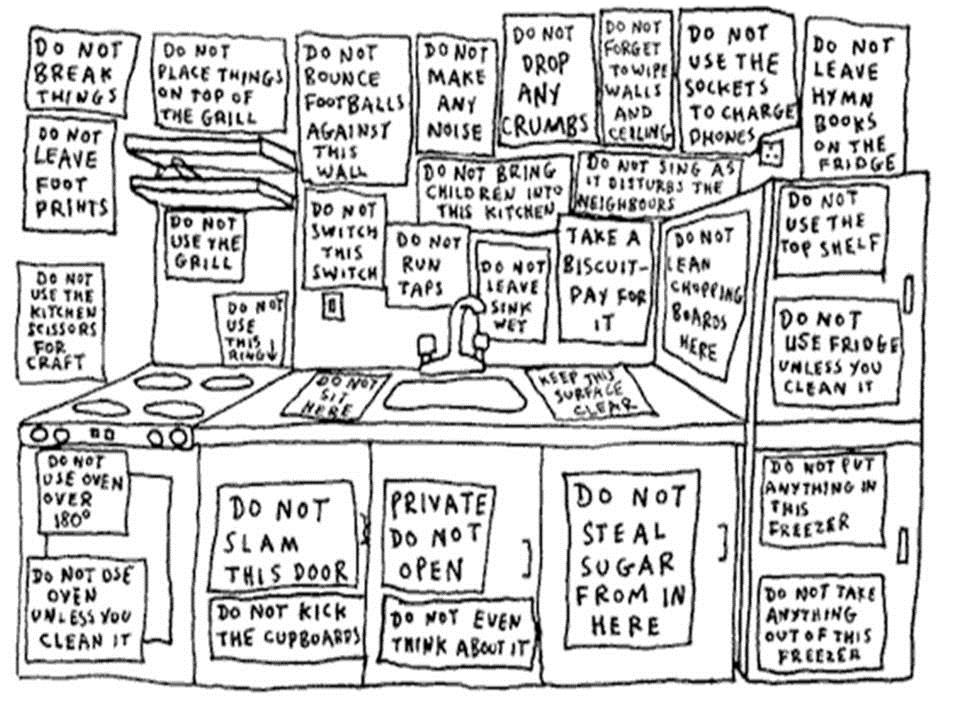
Whenever we start work with a new church client, there are certain topics of discussion that by the nature of church design come up again and again. I thought it might be fun to use this blog as an opportunity to identify some of these perennial topics, and talk about the design issues associated with them. Let’s think today about Kitchen Design.
Not every project considered may have what we traditionally think of as a “kitchen.” On the other hand, every church we work with consistently identifies the importance of food and beverages of some sort to the sense of gathering and fellowship that binds a church together. What could be more appropriate in a church than “gathering at table,” both in worship and fellowship?
So kitchen design is really a broader topic of “food service design,” thereby touching-on not only what historically has been a “church kitchen,” usually adjacent to the major fellowship space, but increasingly on food service related to gathering, lobby, coffee shop style café spaces. Food service for these spaces deals much less with “cooking” equipment and much more in coffee and beverage service, along with other lighter fare. Operation of these sorts of café spaces can be as simple or elaborate as your church’s ministry vision. You can spend hours talking about what type of coffee service best fits your church’s needs, much less other aspects of food preparation and display. Our best advice: make sure your church’s architect has a capable Food Service Consultant on the team to work through these issues with you.
And what about the church kitchen itself? Let’s talk about that perennial question, “will it be a warming kitchen, or a commercial kitchen?” While budget is always the prime motivator in churches asking this question, we suggest that an equally or more important factor is this: “what kind of meal service do you envision, and will you be serving the public?” Because of Health Department regulations in most jurisdictions, regardless of your budget, if you intend to serve meals to the general public, including ministry programs like “meals-on-wheels,” then your kitchen must meet your Health Department’s standards for commercial kitchen operations. This includes the type of countertops and wall finishes, the level of dishwashing equipment, a commercial hood and fire suppression system, and even having a certified food handler identified as a responsible party.
If on the other hand, you are only serving within your church community itself, you may choose to use more residentially-styled equipment, cabinetry and surfaces. Your options are more flexible, and can be mostly dependent on the budget you have, and what sort of meal service you wish to provide. Undeniably, residentially-styled equipment and kitchen spaces are a more familiar working environment for your likely-volunteer church member kitchen staff. On the other hand, residential appliances and cabinetry put to heavy use in a church setting will wear and tear and likely fail quicker than heavier-grade stuff.
Many of the churches we work with that do not intend to serve the public will go with a sort-of hybrid kitchen, perhaps having a commercial coffee-making system, a commercial-grade dishwasher, but higher-end residential range and wall ovens. Depending on whether you wish to have a fryer or other grease-laden cooking, you may still need a commercial-grade hood and fire-suppression system.
As with café food service, our primary advice is that you and your church architect have a qualified Food Service Designer on the design team to help evaluate the type of meal service you wish to do, the level of equipment best-suited for those purposes, and an evaluation of the budget required for the type of kitchen that emerges. Slightly-used commercial kitchen equipment, and phasing, can help you achieve your church “dream kitchen” over time, if not immediately.